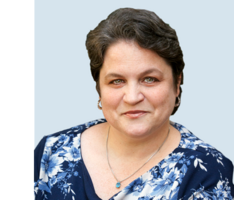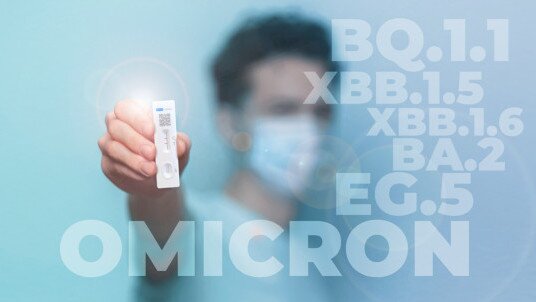Nursing and the Dx Evolution
NewsMarch 23, 2023

The pandemic accelerated transformation in nursing and diagnostics. One result? The healthcare sector needs to better train the next generation of nurses on how to use new diagnostic technologies and how to counsel patients on the tests and findings. Health educators have taken note…and action.
When Nursing and Diagnostics Intersect
Through the recent public health crisis, both providers and patients have increasingly recognized the importance of healthcare diagnostics. Sparked by acceptance of COVID-19 Rapid Antigen tests, at-home diagnostic kits are now proliferating for a range of diseases. Due to increased investment in diagnostic innovation, decentralized access to testing, and a growing recognition of their importance in managing and preventing disease, diagnostics are playing a more visible and crucial role in improving health outcomes.
At the same time, the role of nurses in the U.S. healthcare system has evolved in recent years. Nurses are expected to play an increasingly critical role in improving health outcomes and addressing the underlying causes of poor health, especially where physician shortages abound. Nurse responsibilities are expanding to include many tasks previously fulfilled by doctors. Therefore, it is crucial for nurses to have a strong foundation in diagnostic skills, including the use of Rapid Antigen tests, to address COVID-19 and other respiratory infections effectively.
“The recognition of nurses for their roles in diagnosis is critical to achieving diagnostic safety improvements and advancements,” according to the Agency for Healthcare Research and Quality in its September 2022 report, “Reinforcing the Value and Roles of Nurses in Diagnostic Safety.” Nursing schools have an important role to play in ensuring that their students are adequately prepared to use both legacy and emerging diagnostic tools in practice.
Diagnostic Education


“Diagnostic training is a key part of our curriculum but what we teach depends on the level of student. What we teach those training to be RNs naturally differs from how we work with APRN candidates. At the pre-licensure RN level, students will focus on the basic, detailed tasks of implementing a diagnostic test. At the advanced practice level of nursing, they’ll learn how to make a diagnosis like a physician, and then make a care management plan, a treatment plan, order any additional laboratory tests and even prescribe medication. ”
- Desiree Mullis Clement, Assistant Dean for Graduate Clinical Programs at Emory University’s Nell Hodgson Woodruff School of Nursing.
“Clement and her colleagues designed curriculum that appeals to different learning modalities. “In addition to traditional teaching methods, we have simulation lab spaces including low and high-fidelity mannequins through which nursing students actually experience a patient room or O.R. environment and where the virtual patient may even be talking back to you,” Clement said. “We also may use standardized patients, basically specialized actors, who are trained to portray patient scenarios requiring diagnosis and giving nursing students more direct hands-on practice. We are teaching about the use of specific diagnostic tools as well as about the effective use of technology – like telehealth - to support the diagnostic process.”
Emory’s interactive simulations and role plays combine experiential, visual and oral teaching techniques to ensure understanding, mastery and retention. They also help build both clinical skills and soft skills like communication, critical thinking, and collaboration – all essential to thorough diagnoses and successful patient education.
Patient education is a growing aspect of a nurse's job: providing patients with the necessary knowledge and skills to take charge of their health and engage in interventions that may increase their chances for positive outcomes. “It's incumbent upon us to make sure that the patient feels informed about anything we're planning for their treatment. Becoming an RN is not just about carrying out a doctor’s orders anymore. Now, it is everybody's responsibility on the healthcare team, regardless of level, to take part in educating the patient so they feel informed and know what to do next,” said Clement. That includes educating patients on the value and use of diagnostic tools.>
With the advent of at-home diagnostic tests and at-home collection kits, educating patients about diagnostics – from helping consumers understand which tests are right for their circumstances to helping them use the tools most effectively – is more important than ever. Clement suggests that nurses play an essential informational role supplemented by an array of easily consumed materials.

“When caring for patients, we are moving more towards a prevention model versus just a disease model. So, part of a nurse’s job now is trying to reach patients sooner with preventative measures. Patient websites with straightforward FAQs and social media with short tutorials and brief videos are helpful. They want bite size lessons.”
Many providers remain uncertain about the efficacy of at-home diagnostic testing. So, Clement suggests that nurses ensure their patients are well-informed to produce the most useful diagnostic results and to move forward appropriately based on those results. “With COVID-19, for example, we can help patients know whether and when to isolate, how to take a nasal sample and properly insert the swab into the tube, squeeze and stir. We can help encourage them to check expiration dates. We can teach them about various treatment options and how to pursue them.”

Dr. Mark Graber is a Senior Fellow at RTI International and Professor Emeritus of Medicine at the State University of New York at Stony Brook. He is founder of the Society to Improve Diagnosis in Medicine and the journal, Diagnosis. In 2020, Dr. Graber co-authored an article for Academic Medicine, “Improving Diagnosis Through Education” along with Dr. Andrew Olson, an Associate Professor of Medicine and Pediatrics at the University of Minnesota Medical School and Chair of the Education Committee of the Society to Improve Diagnosis in Medicine. They wrote...

“Each patient’s diagnostic journey is unique, and even common conditions have multiple “correct” paths to diagnosis. Yet, the outcomes of the diagnostic process are not nearly as reliable as they should be; the burden of diagnostic error is unacceptably high, with real costs in lives and dollars. While many clinical interventions to improve diagnosis have been suggested and some have been studied, we firmly believe that the most promising and effective way to improve the outcomes of the diagnostic process is to improve the education of health professionals.”

Like Emory, other leading university programs are heeding the words of Dr. Graber and Dr. Olson and strengthening the diagnostic training they provide their students. At Arizona State University’s College of Health Solutions, the college provides advanced degrees in biomedical diagnostics and hosts annual conferences of diagnostic leaders from around the world. At leading nursing programs from NYU to Case Western Reserve, students can take courses like, “Advanced Physical Assessment Across the Lifespan” which introduce the basics of laboratory and diagnostic testing. The University of Illinois – Chicago has devised a new method of diagnostic competency assessment in conjunction with their simulation approach.

“Nurses educated and empowered to fully participate in the diagnostic process are essential for achieving better, safer patient outcomes,” wrote Drs. Olson and Graber in their more recent article for Nursing Outlook titled, “The critical need for nursing education to address the diagnostic process.”
Fortunately, nursing educators like Emory’s Desiree Clement and her peers are continuing to advance this mission.



